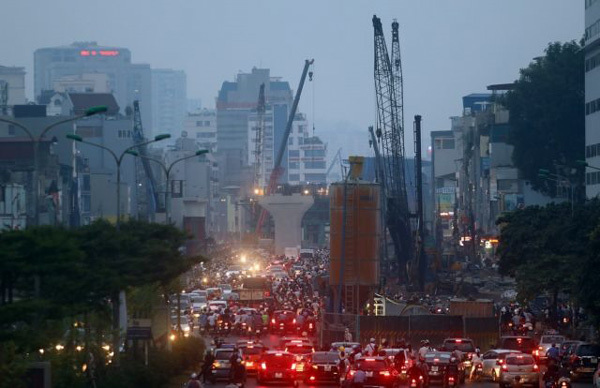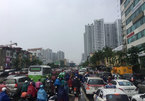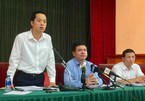 |
| Traffic and construction density contribute to Hanoi’s air pollution. Mobile emissions tests will be implemented on the city’s cars. Photo taken on Truong Chinh Street. — VNA/VNS Photo Huy Hung |
Roadside tests will be carried out in the country’s two biggest cities in a co-effort by the Transport Ministry, Vietnam Register and departments of transport to raise awareness of car owners about periodic engine maintenance in an effort to get air pollution under control.
The force will first focus on checking public buses, coaches and trucks discharging black smoke, and at the same time, urging transport enterprises to tighten management over vehicles to meet safety and environment standards.
The MoT has encouraged public bus companies to switch to eco-friendly vehicles to reduce greenhouse gas emmisions.
“The checks are expected to tackle severe air pollution in urban areas, especially Hanoi and HCM City,” said a MoT representative.
Vehicles that exceed emissions standards will be sent to a registration centre for re-examination and maintenance, and won't be permitted to return to the road until the problems are fixed.
In March, Prime Minister approved a plan to apply emissions standards for new cars and imported used cars.
Cars using forced induction and internal combustion produced before 1999 will be set an emissions level of 1 of 4.5 per cent of carbon monoxide (CO).
For those produced from 1999 to 2008 and after 2008, a level 2 of 3.5 per cent of CO will be applied from January 2021 and January 2020, respectively.
Imported used cars operated by forced induction and internal combustion engines have been set a level 4 of 0.5 per cent of CO from May 15, 2019.
The Euro4 and Euro5 emission standards will be applied to newly produced and imported cars from 2017 and 2020, respectively.
According to data released by Vietnam Automobile Manufacturers Association and TC Motor, nearly 286,000 cars were sold in the domestic market in the first nine months of the year.
Vietnam is expected to surpass 300,000 vehicles by the end of 2019 to be ranked in the top five ASEAN countries with the highest automobile consumption.
Since September, air quality in Hanoi and HCM City has declined dramatically with the Air Quality Index exceeding red-warning levels for a number of days.
The increasing traffic density along with construction and agricultural practices have been blamed as the main causes of the problem.
In September, the Hanoi People’s Committee asked the city's Department of Transport to consider a vehicle ban around Hoan Kiem Lake and its surroundings for a month.
The temporary ban would offer local authorities the chance to analyse and develop long-term solutions to better control vehicles in the area and improve pedestrian areas and the city’s environment.
However, details of the restrictions have yet to be revealed.

High-rise apartments trigger Hanoi traffic hotspots
Eight more traffic hotspots have cropped up in Hanoi despite the city’s efforts to improve infrastructure.

Air pollution alerts impeded by outdated devices
The fact that air pollution alerts in HCMC are not timely made available is attributable to the Center for Environment and Natural Resources Monitoring’s use of outdated environmental monitoring devices, said Cao Tung Son, director of the center.

Hanoi moving to address air pollution: authorities
Hanoi is promptly taking actions to improve air quality which has been assessed as very low for the past two weeks, according to municipal authorities.
VNS
 Hanoi and HCM City planned to deploy roadside emissions tests for vehicles in response to the declining air quality, the Ministry of Transport has announced.
Hanoi and HCM City planned to deploy roadside emissions tests for vehicles in response to the declining air quality, the Ministry of Transport has announced.